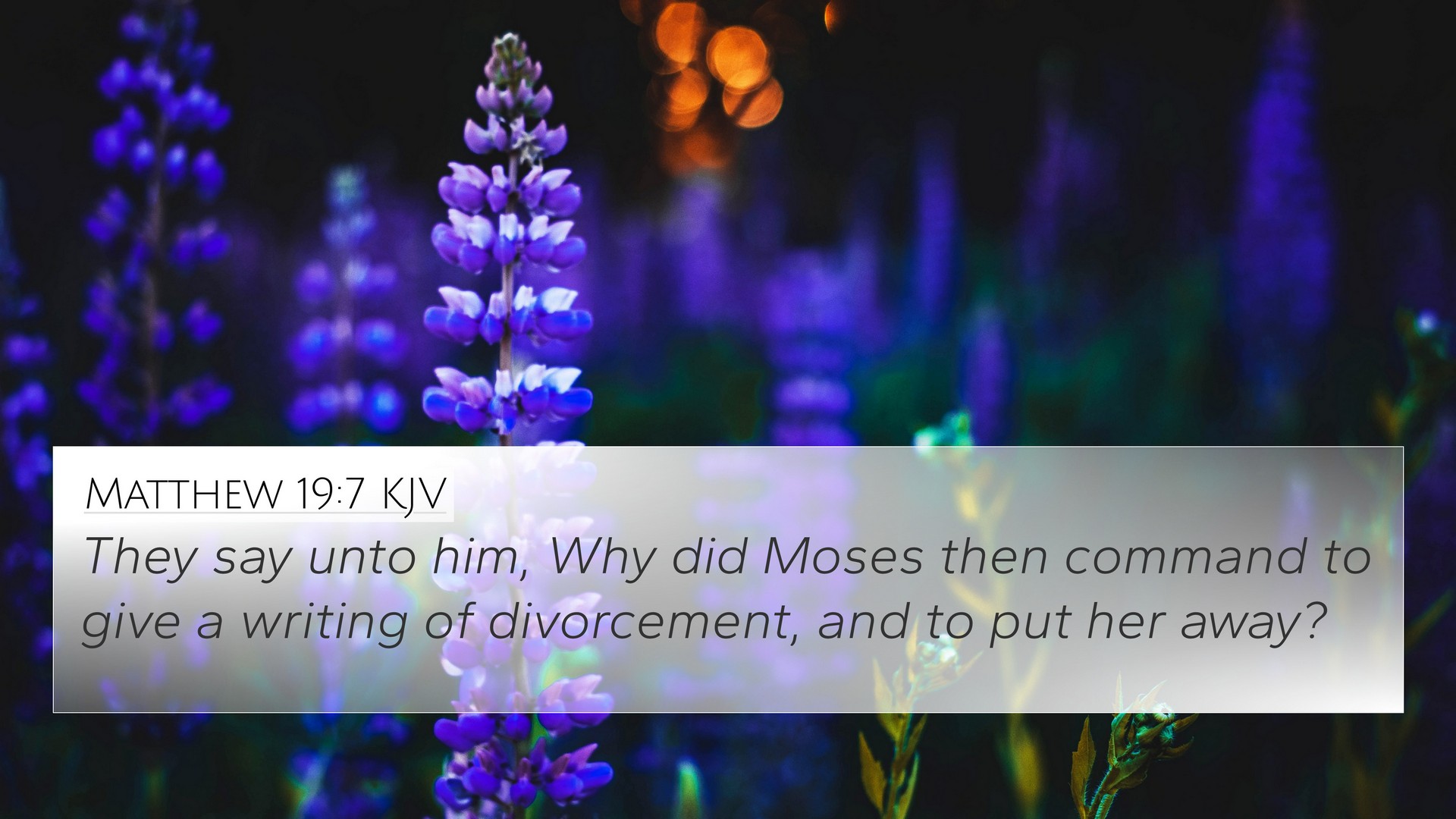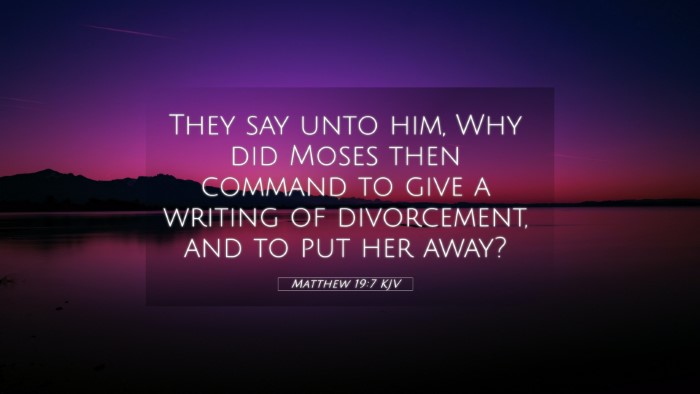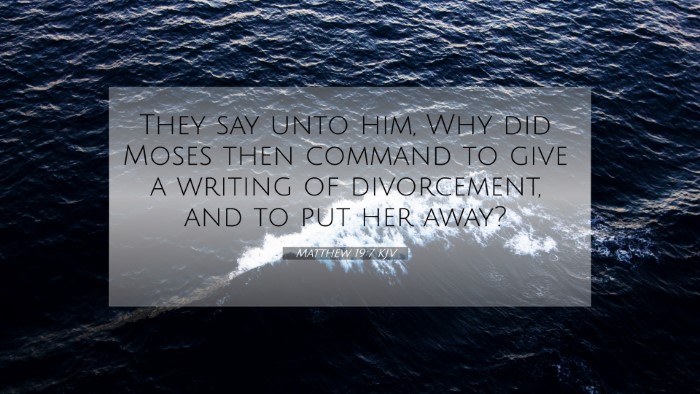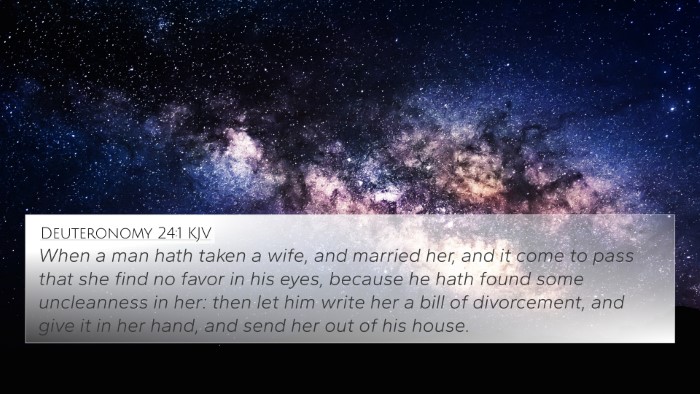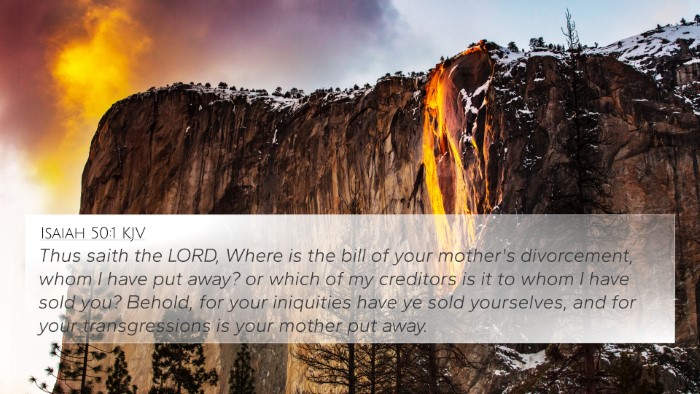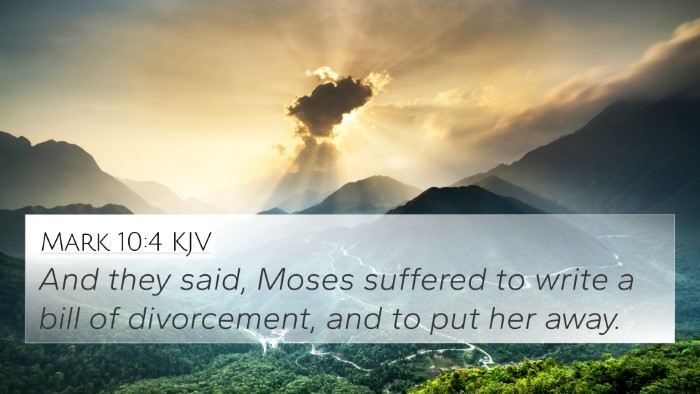Understanding Matthew 19:7
Matthew 19:7: "They said to Him, 'Why then did Moses command to give a certificate of divorce, and to put her away?'"
This verse reflects a dialogue between Jesus and the Pharisees regarding the topic of divorce, particularly drawing upon the Mosaic law as it relates to the institution of marriage. The Pharisees seek to challenge Jesus' teachings by referring back to the law of Moses.
Contextual Analysis
In this passage, we observe the Pharisees attempting to trap Jesus with questions that reflect their strict adherence to the law while also exposing their understanding of it. They reference Deuteronomy 24:1-4, where Moses permitted divorce, and are keen on clarifying the rationale behind this commandment.
Key Insights from Commentaries
- Matthew Henry: Suggests that the Pharisees' question reveals the hardness of human hearts, which led to the law being instituted. Henry emphasizes that Jesus redirects the conversation to a higher moral standard that transcends the law.
- Albert Barnes: Points out that Jesus' approach is aimed at restoring the original intention of marriage as a divine union. He asserts that while Moses permitted divorce due to the hardness of hearts, God’s design was for marriage to be a lifetime commitment.
- Adam Clarke: Offers a historical perspective on the interpretation of Mosaic law on divorce. He underlines that the certificate of divorce was a means to protect women from being unjustly treated within the context of divorce, emphasizing the compassionate aspect of the law.
Thematic Connections
This verse opens the door to several important themes within Scripture concerning marriage and divorce. The dialogue encourages cross-referencing other biblical texts that offer complementary insights into these themes.
- Genesis 2:24: "Therefore a man shall leave his father and mother and be joined to his wife, and they shall become one flesh." This foundational verse establishes the sanctity of marriage.
- Matthew 5:31-32: In the Sermon on the Mount, Jesus expands upon this conversation, elucidating that divorce was allowed for sexual immorality, thus ascribing deeper moral implications to the act of divorce.
- Malachi 2:16: "For the Lord God of Israel says that He hates divorce." This underscores the seriousness with which God views the marital covenant.
- 1 Corinthians 7:10-11: Paul reinforces Jesus’ teachings by advising that couples should not separate and addressing the circumstances under which separation may occur.
- Ephesians 5:31: Paul cites Genesis, reiterating the call to unity and love in marriage, promoting the idea that marriage reflects the relationship between Christ and the Church.
- Romans 7:2-3: Reflecting on marriage's binding nature, Paul discusses how the law governs such relationships and the consequences of divorce.
- Hebrews 13:4: "Marriage is honorable among all, and the bed undefiled; but fornicators and adulterers God will judge." This passage upholds the sanctity of marriage while addressing divorce implications.
Cross-Referencing Insights
When engaging in a comparative Bible verse analysis, the importance of cross-referencing becomes clear. This method allows deeper insight into the nuanced teachings on marriage and divorce by connecting various scriptures.
Tools for Bible cross-referencing, such as a Bible concordance or a cross-reference Bible study guide, can significantly enhance understanding. Through cross-reference Bible study methods, one can explore:
- Identifying connections between Old and New Testament teachings on divorce.
- Links between the teachings of Jesus and those of the Apostle Paul on marriage.
- Comparative study of themes through the Gospels, noting variations in perspective.
Conclusion
Matthew 19:7 serves as a critical point in understanding Jesus' perspective on the law of Moses and God's design for marriage. By engaging in inter-Biblical dialogue through careful cross-referencing, it brings clarity to complex issues surrounding divorce. The teachings observed here, including those in various parallel verses, reinforce the sanctity of marriage and encourage deeper reflection on how these principles apply in contemporary contexts.
